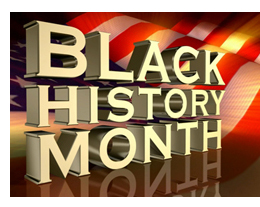
Cultural heritage months promote understanding
 Cultural heritage months provide valuable opportunities to learn about and celebrate the contributions of specific groups of people to the workplace and understand their unique cultural experiences.
Cultural heritage months provide valuable opportunities to learn about and celebrate the contributions of specific groups of people to the workplace and understand their unique cultural experiences.
African-American History Month, also called Black History Month, is the first and one of the nation’s oldest cultural heritage celebrations. Carter G. Woodson (1875-1950) first established Negro History Week in 1926.
The second week of February was chosen because the week included the birthdays of two significant American statesmen: President Abraham Lincoln (Feb. 12) and Frederick Douglass (Feb. 14), an important human rights leader in the abolition movement. The nationwide celebration was expanded to a full month of activities and the name changed to Black History Month in 1976 during the U.S. Bicentennial celebration.
ITD Brown-Bag Lunch 'Welcoming the Stranger: Overcoming the Barriers' |
The first theme was simply “The Negro in History.” This year’s theme is “Black Women in American Culture and History.”
Other groups offer similar cultural heritage months throughout the year to honor contributions and remember experiences.
They include Irish-American Heritage Month in March, Asian-Pacific American Heritage Month in May, Caribbean-American Heritage Month in June, Scottish-American Heritage Month in September, National Hispanic Heritage Month from Sept. 15 to Oct. 15, German-American Heritage Month, Polish-American Heritage Month and Italian-American Heritage Month in October, and National American Indian Heritage Month in November.
“If we use every opportunity to explore diverse heritages, cultures and histories of people around us, we can discover new ways of thinking,” said Chief Human Resource Officer Mary Harker. “These times allow us to come together to celebrate our similarities and our differences,”
Expanding cultural awareness is particularly important to ITD’s evolving workforce where people from different backgrounds and viewpoints increasingly must work together in new combinations and situations.
“By embracing diversity throughout the department, we help encourage a culture where new ideas can be cultivated and flow freely.” Harker said. “We can learn to understand and communicate better with people at work and throughout our careers.”
Published 2-17-2012